Tips for Finding Inspiration, Triumph, and a better running shoe as a Slower Runner
When asked about their pace, I’ve heard too many people say "I'm a really slow runner" or “I’m a turtle” or "I'm just a jogger" or “I don’t even know my pace” (usually not true!). Unfortunately, way too many runners feel shy or insecure talking about their running pace. Look, it’s cliche, but if you run at any pace you’re a runner, and you deserve to call yourself a runner. Whether you're a beginning runner, an older runner, a runner coming back from injury, or a runner who has fully embraced a slower pace, give yourself a confidence boost and call yourself a runner.
As a slow runner, you’re in good company—half of all marathon finishers run slower than 9:30 minutes per mile (6 min/km) and more than a quarter are running slower than 11 minutes per mile (7 min/km). And let’s just remember that marathon runners are, on the whole, more committed to the sport than most. Lots of us run 2-3 times a week in the 12-16 minutes per mile range (7:30-10 min/km) with zero interest in running a marathon. You’re still a runner. It’s totally fine to embrace being “slow!”
There's actually a huge benefit that comes from slow running. The forces you generate while running are dramatically different at 5 minutes per mile than 12 minutes per mile. Both forces at impact and forces during push-off put significant strain on your body. The accumulation of forces is one of the primary reasons such a large percentage of runners get injured each year. If you reduce those forces by running slower, you put less strain on your ankles, knees, hips, and lower back. (Even if you want to compete, the consensus is that 80% of your workouts should be a a slow pace.)
But given our competitive culture of stack ranking everything and using data to make value judgments, being a jogger or slower runner isn’t always easy. Labeling yourself (or being labeled) as a slow runner can dent your psyche. So let’s talk about running inspiration, motivation to keep running, and the best running shoes for slower runner, the “turtle” crowd.
I’ve run a number of fast-ish marathons in the past, but a lot of my own training these days is 10 minutes per mile (6:20 min/km) or slower. I’m happy about that pace, and because of it I know something about how runners in slower pace zones feel, how to stay inspired, and what to look for in a running shoe.
First of all, can we just acknowledge that shopping for running shoes is an intimidating pain? Even as a life-long runner, I go into running shoe stores, look at the vast shoe wall, and have no idea where to start. Often everyone in the store looks like they could string together a series of 5-minute miles (3 min/km)—and I imagine them looking down on a slow jogger. Plus, given running shoe advertising and athlete sponsorships, it sure seems like most companies make shoes for the fast runners and sell them to the rest of us. Given this environment, it makes perfect sense that you might be shy about asking for the best running shoe for a slower runner. But if I run 13 minutes per mile (about 8 minutes per kilometer), it seems like I would want a different shoe than that 5-minute miler. Doesn’t it?
It turns out the answer is yes, you do need a different shoe.
Okay, please explain. The forces you generate while running change dramatically as pace changes. Not only that, the forces you create during push-off are much different than the forces at impact. Because of this, a 13 minute per mile runner really does need a different shoe than a speedster. At Vimazi, we developed a physics equation that tells us the timing, location, and intensity of forces created at impact and push-off for every pace. Using this physics data, we’re able to adjust the density in rearfoot and forefoot of each of our pace-tuned models so that they respond to the forces at the pace you run.
One pace doesn't fit all, and it turns out that one shoe doesn’t fit all either.
When I explain the pace-tuned technology behind Vimazi running shoes, some runners say “those sound too technical for me. I’m just a slow, casual runner.” They go on to say that Vimazi shoes must be made for the fast, competitive set (like all other running shoes). I mean, why else spend all the time, testing, and technology on shoes for “slower” runners?
Nothing could be farther from the truth! Think about it this way: The Vimazi Z70 is specifically tuned to perform best between 10-13 min/mile (6:20-8 min/km). The cushioning and ultra efficient push-off you get while running in this shoe at this pace are the result of careful engineering based on the forces you generate while running at that pace. The forefoot stability and design features have all been put together with a 10-13 minute per mile runner in mind. The shoe is literally made for slower, more casual runners. Not for fast runners!
Crazy, but also pretty empowering. We’ve listened to runners, worked the physics, created the technology, and now we’re making a shoe specifically for the pace you run. Coming in early 2024, the Vimazi Z80 will be tuned for runners running 12-16 minutes per mile (7:30-10 min/km).
If you run in the 10-16 minute per mile range, here are a few things you might be looking for in a pair of running shoes:
Cushioning - Rather than generic “max” cushioning that supposedly works for everyone, Vimazi gives you personalized max cushioning based on the way you run. Improved cushioning reduces the shock and strain on your body. Too many runners suffer from shinspints, lower back pain, hip, knee, and foot pain. The way we see it, better cushioning can only help.
Stability - Most of the time during a running stride is spent on the push-off. The FastPod we’ve manufactured into the forefoot of each of our shoes increases torsional strength. You don’t get that with a midsole that’s the same density heel to toe. A stable push-off reduces the stress on the tendons and ligaments that protect your hips, knees, and ankles.
Better Efficiency - The pace-tuned FastPod technology and a rocker design help in propulsion during push-off. You get a super lively feel because the shoe’s made for the toe-off at your pace. Just because your a slow runner doesn't mean you don't want to feel faster!
A Great Fit - It our shoes don’t fit your particular foot, then you should find a shoe that does. That said, we spent 5 years testing and iterating until we got the fit of Vimazi pace-tune shoes exactly right. Add lightweight without sacrificing comfort, and you have something special.
Okay, so what are some tips to stay motivated and inspired?
Running, in all its forms and at all its paces, embodies a journey of personal growth, part belief in the process, part determination and unwavering spirit. The simple sound of feet on the pavement tells a story of resilience, pushing boundaries, and overcoming challenges.
This can be especially true if you’re a 2-3 days per week runner who typically run between 10-16 minutes per mile. In some ways your running journey harder because there may not be races on the calendar or running partners waiting on Tuesday afternoon. The work you do is admirable, inspiring, and worthy of celebration. I’m here to remind you (and, to be honest, myself) that your pace does not define your worth, and you can locate inspiration in lots of places. Here are some thoughts that have helped inspire me and many other runners over the years.
Honor Your Starting Point
Every running journey starts somewhere, and your pace is a reflection of your unique starting point. It’s essential to remember that your starting point—slower!—doesn’t diminish the significance of today’s efforts. You may be a beginning runner who's just starting out, a lapsed runner who wants to get back into it, an older runner who has one pace called slow, or someone who's content with running a slower pace. Celebrate where you are and where you're starting from.
Defying Comparison
The running world may seem dominated by fast times and podium finishes. Your world may also include friends, family, or neighbors who are avid runners and apt to talk about pace. Remember that your journey is your own. Comparing yourself to others will detract from your joy and sense of accomplishment. Embrace progress, no matter how incremental it may seem.
Okay, Let’s Compare
Guess what? Most people don’t run despite the overwhelming evidence of how good it is for you (even after 60 years old!). If you are out running, even very slowly a couple days a week, you’re doing something that 85% of the population isn’t doing. So good for you!
Write Your Own Story
Your running journey is entirely your own. But that doesn’t mean you shouldn’t have a plan. What are you trying to accomplish? It could be a simple baseline of fitness or feeling better when you go hiking or perhaps you have an eye on running a half marathon in a couple years. Just know your goal so you don’t get pulled into someone else’s story. Your journey doesn’t have to be about times or number of miles. Creating stories to share, finding time for yourself, or meditating are fine and worthwhile goals.
Set Meaningful Goals
More on goals. While time-based goals have their place, it’s important to set goals that transcend pace. Maybe it’s completing a new distance, running a race for charity, or achieving a certain number of consistent training weeks. When you set and reach a goal that’s meaningful to you, you’ll feel a rich sense of purpose and fulfillment. This, in turn, will give your life more meaning.
Embrace the Process
Running is as much about the process as anything else. Even if your story focuses on racing, the races come and go, and you’ll still want to keep running. Focus on the small victories—the days you lace up your shoes even when it’s challenging, the hills you conquer, and the fresh air and beautiful vistas. Getting out for a slow run on a cold, wet November evening is certainly a victory, and one I know from experience. All of these moments will help build on each other as well as sustain you.
Celebrate Non-Numerical Achievements
While personal records and time goals are achievements for some to celebrate, you don't let them define your experience. Reflect on the strength you've gained, the pace you’ve embraced. the obstacles you've conquered, and the mental fortitude you've developed. These intangible victories will end up being the most important experience of all.
Walking is Okay
Lots of people these days use a walk-run technique for their workouts. Mixing the two together is fine, and much better than not getting out there at all. If adding some walking to your running routine is what works for you, then embrace it. But what do you tell people? That you went running! By the way, lots of runner-walkers have been using the Vimazi Z70. Yes, it's "tuned" for running between 10-13 minutes per mile, but it still performs better than most running shoes when at a walking pace.
The Power of Perseverance
Running at any pace, but especially paces in the 10-16 minute per mile range, demands a unique brand of determination. It’s way too easy to think of it as not important and move your workouts down the priority list. Embrace the power of perseverance—the grit that keeps you going when doubt creeps in. Every step you take is a testament to your inner strength.
Running as Self-Care
Running isn't just about pushing yourself physically—it's also a form of self-care. Use your runs as an opportunity to clear your mind, process thoughts, and recharge your spirit. Let the rhythm of your steps guide you to a place of peace and serenity. Sometimes self-care can mean not running, too. Be flexible with your plans when you’re overly tired, sick, or feeling an injury coming on. Yes, it can be incredibly hard to know the difference between unmotivated and too tired, but listening to your body allows you to care for it appropriately. Self-care is also making sure you have the proper gear, like maybe running shoes tuned for your pace.
As mentioned above, slower running may help prevent injury because the forces are less intense than faster running. But that doesn't mean you won't get injured. Running can be self-care, yes, but when knees or hips or ankles or feet or lower back start feeling funky and sore, self-care might well be not running. Most running injuries are due to running too much at paces that put too much strain on your body.
Find Community
You don’t have to be alone on this journey. The running community is filled with people at every pace who understand the challenges and triumphs of what you’re doing. Seek out running clubs, social media communities, casual group runs at your local running store, and events where you can connect with fellow runners who share your passion. According to many, many studies, making friends and working out are two of the most important things you can do to live a long, happy life.
Gratitude for Your Body
Every step you take is a testament to the strength and resilience of your body. Cultivate gratitude for your physical health and the ability to run. Treat your body with kindness and respect, knowing that every stride contributes to your overall well-being.
Fuel Your Passion
Over times it’s easy to fall into ruts and boring routines. It’s important to continually think of ways to keep the flames burning. Find new running routes, practice mindfulness on your runs to discover new things on your everyday route, try trail running, experiment with different running styles, gift yourself some new running gear (pace-tuned shoes?!?), try heading out at a different time of the day. Just remember that running is like your canvas for self-expression and discovery. As Stewart Brand says, “stay hungry, stay foolish” which I sometimes edit to “stay hungry, stay curious.”
Practice Overcoming Mental Blocks
Running is as much a mental endeavor as a physical one. Maybe it’s more mental. As I write this, a long run for me is 8 miles. But I’ve been out on many 4-hour trail runs and competed in 50-mile races. 50 miles sounds ridiculous to me right now, but that’s just a mindset. When self-doubt or negative thoughts arise, remember all the times you've conquered challenges before, running or otherwise. Yes, acknowledge those thoughts, but use mindfulness to set them aside so they don't dictate your journey. There will be some days when you just feel terrible. This is your chance to be a Stoic and thank those Stoic Gods for opportunity to practice equanimity, to remember you’re doing something that most people don’t do, that you’re grateful for being able to run at all, that you’re alive.
Be Your Own Cheerleader
Celebrate your achievements, both big and small. Be your own biggest supporter, cheering yourself on as you push your boundaries and roll toward your goals, no matter the pace. Don’t be shy about sharing your achievements with others—not races or times but just feeling good about yourself
Inspire Others
Your slow-paced running journey has the power to inspire those around you. As you continue to show up, push your limits, and demonstrate the strength of spirit, you’ll be an inspiration for friends and family. It may not seem that way, but they’re watching and, hopefully, making their own changes because of your efforts.
Running isn’t a matter of speed and shouldn’t be defined by pace. Slower runners unite! Celebrate those 12-minute miles! Celebrate your commitment and resilience! There’s a way to find courage to overcome and joy in the moment with every stride. Every workout furthers your running story. Remember, as well, you’re a part of a bigger community of runners who celebrate your wins whether you know them or not. Keep running!
More About Vimazi
Here’s what Vimazi does
We make pace-tuned running shoes that give runners better cushioning on impact plus more efficiency and stability during push off than previous generations of running shoes.
Vimazi running shoe lineup
As of late 2023, we offer six road running models and two trail running models, all of which come with our patented midsole technology.
PACE-TUNED ROAD SHOES
Vimazi Z20 (4:30-6 minutes per mile or 2:40-3:30 minutes per kilometer)
Vimazi Z30 (5-7 minutes per mile or 3-4:30 minutes per kilometer)
Vimazi Z40 (6-8 minutes per mile or 3:30-5 minutes per kilometer)
Vimazi Z50 (7-9 minutes per mile or 4:30-6 minutes per kilometer)
Vimazi Z60 (8-10:30 minutes per mile or 5-6:30 minutes per kilometer)
Vimazi Z70 (10-13 minutes per mile or 6:20-8 minutes per kilometer)
PACE-TUNED TRAIL SHOES
Vimazi Z2 (8-12 minutes per mile or 5-7:30 minutes per kilometer)
Vimazi Z3 (10-16 minutes per mile or 6:20-10 minutes per kilometer)
COMING SOON
Vimazi Z80 (12-16 minutes per mile or 7:30-10 minutes per kilometer)
Vimazi Z90 (16-30 minutes per mile or 10-18:30 minutes per kilometer)
The physics of pace-tuned shoes
Back in 2017, while running to his 6am interval workout, Vimazi CEO Scott Tucker had an idea. A shoe made for a specific pace, he thought, might offer better cushioning and more propulsive efficiency than a generic shoe that wasn’t “tuned” for a particular pace.
It took three years to completely nail down the physics of human running and understand the precise forces that are generated. We then built an equation that defines running forces. We’re now able to calculate the exact impact force and propulsion force, in Newtons, for any pace, including variations for height, weight, and cadence. (A Newton is a metric unit of force.) Data from the Forces in Running study we conducted aligned with the force calculations we got from our physics equation. In other words, we know it works.
Knowing the exact timing, location, and intensity of impact and propulsion forces at each pace, allowed us to create shoe models for different pace zones that respond to the appropriate forces. This means our pace-tuned technology is based on pure physics. No hand waving, no conjecture, no correlative studies, no self-reported data sets, no marketing fluff. We started with the physics of human running, and it led us to a better running solution: pace-tuned shoes.
The problem with previous gen running shoes
Most running shoes have the same foam density from heel to toe, and they’re sold to runners of every pace. The trouble is that midsole foam can’t respond correctly to the forces at all paces, nor can it respond appropriately to the differences between impact and propulsion forces. To make sure you get all the cushioning you want as well as all the efficiency and torsional stability you deserve, you need a shoe that’s made for your specific pace zone and tuned differently in the heel than the forefoot.
The Vimazi solution
Our solution to this running shoe problem was to create something that's never been done before—pace-tuned running shoes. In 2023, after years of testing, we launched seven road shoe models that span paces from 4:30 minutes per mile to 16 minutes per mile (2:40-10 minutes per kilometer). By making a shoe for a specific pace zone, we’ve been able to deliver better impact cushioning, improved stability, and increased propulsion efficiency for every runner.
25 years experience
We’ve taken everything we learned making running shoes for 25 years—plus running 10Ks, marathons, and ultras for even longer—and elevated it to a whole new level with pace tuning. It offers a better and more personal running experience. We were instrumental in creating shoes and patented footwear innovations for Montrail, Scott Sports, and Pearl Izumi. We learned even more while owning a specialty running store and organizing running events.
We also wrote a book on interval training. Running in Circles: Sciency, Gamey, Head-Scratchy Track Workouts for Faster Running contains lots of slightly wacky but serious interval workouts you’ve never heard of to help you run your best.
A marathoner’s fit
Running shoes can have the best tech, but if they don’t fit well, nobody will wear them. We wouldn’t either! Not only have we spent our careers perfecting innovative fit technologies at other companies, notably at Montrail, we’re also life-long marathon runners ourselves. So we understand fit and know how critical it is, from heel to toe. Each of our models has been painstakingly designed and built with the perfect fit in mind. They’ve also been extensively road tested since 2019, including at the Boston, London, Portland, Missoula, San Antonio, San Francisco, and Two Oceans Marathons. We think you’ll love them.


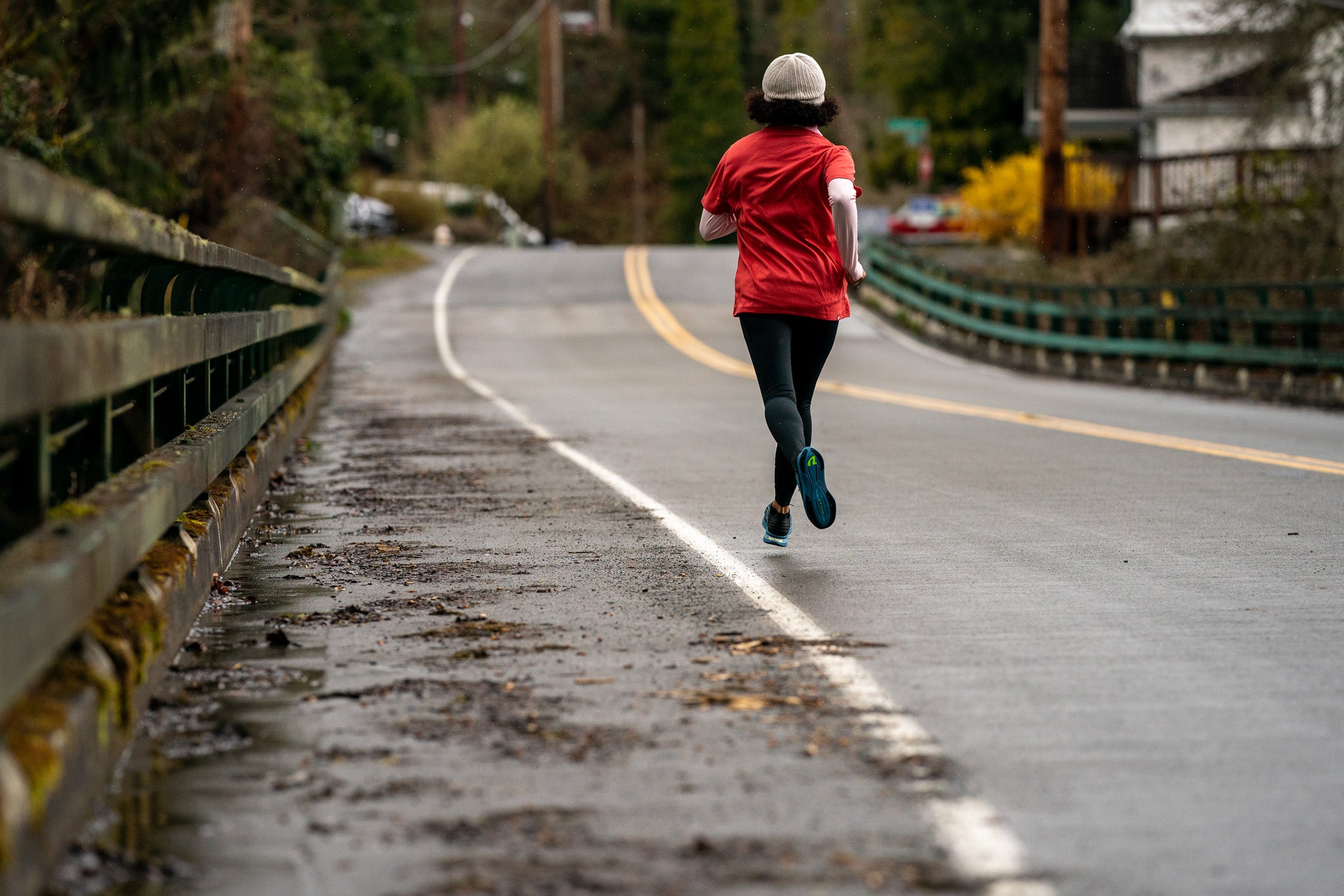
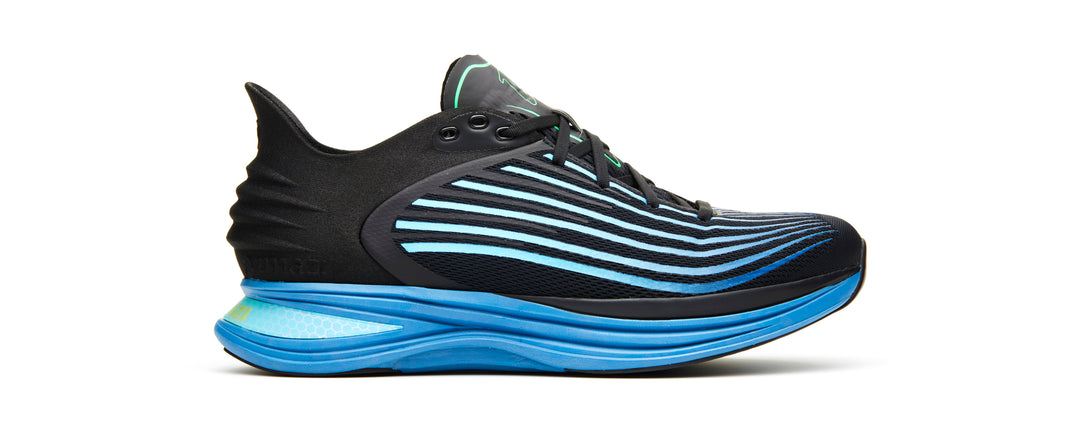
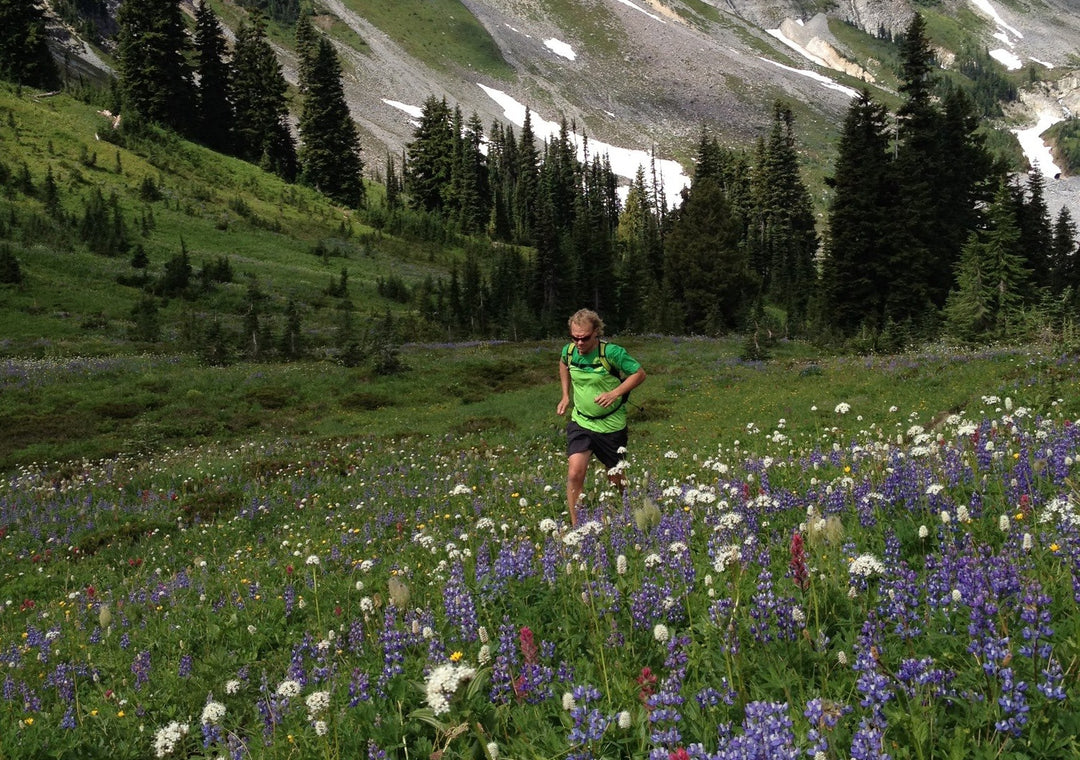
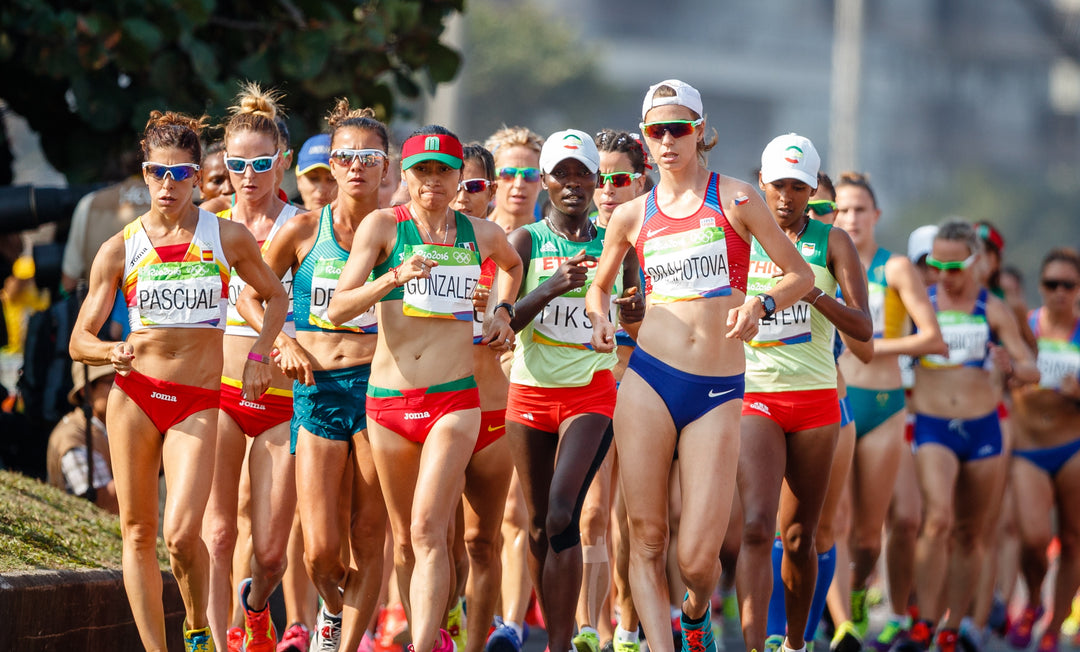
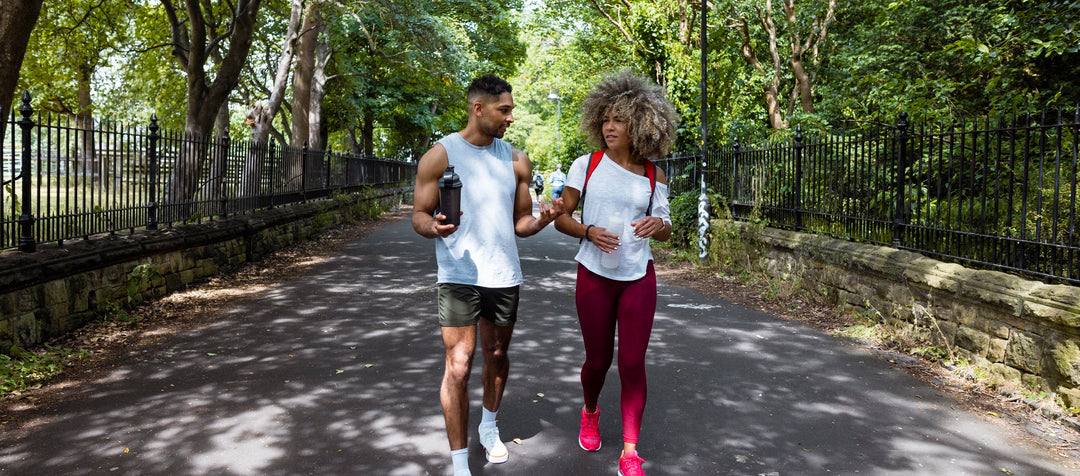
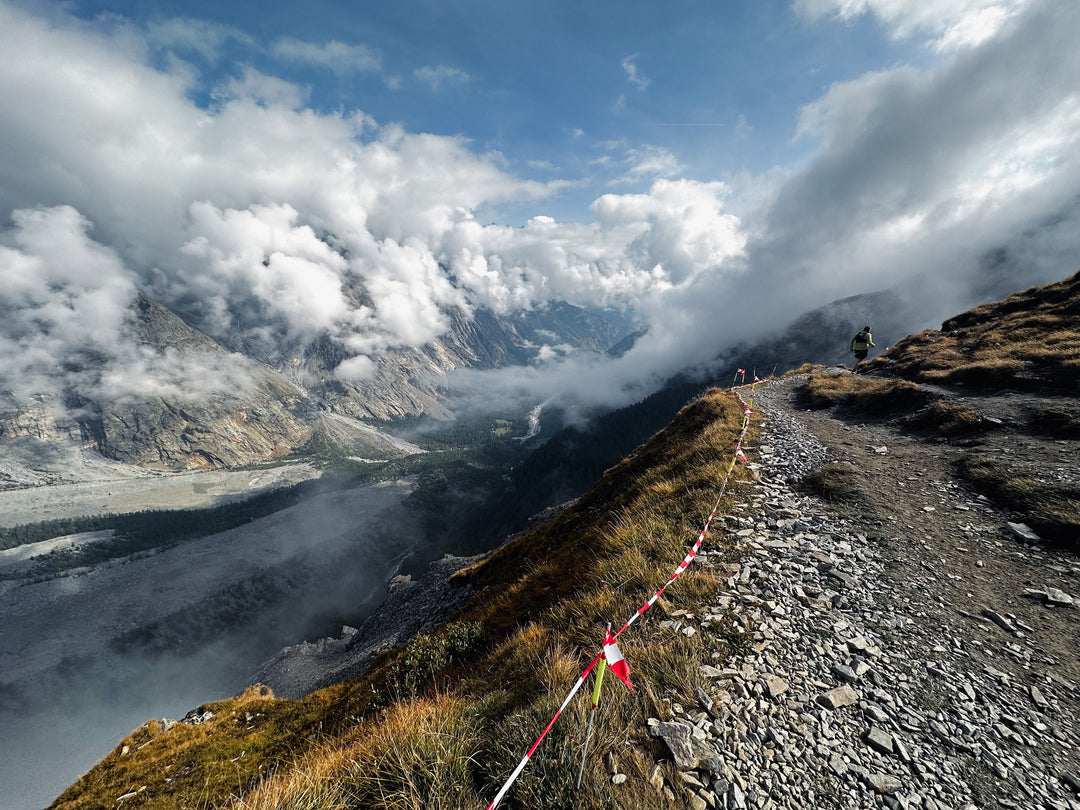

Leave a comment